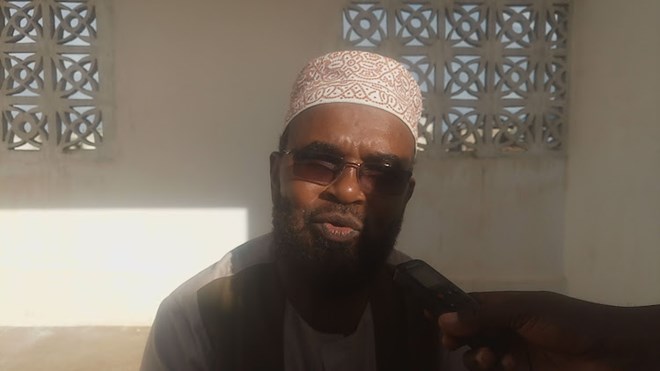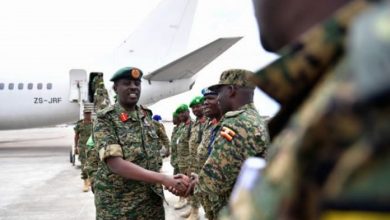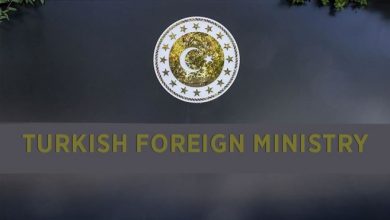Amnesty or a trap? Doubts of some Shabaab returnees
When former al Shabaab combatant Hussein Mohamed* (not his real name) returned to Kenya, he had dreams of starting over after his misadventure.
When former al Shabaab combatant Hussein Mohamed* (not his real name) returned to Kenya, he had dreams of starting over after his misadventure.
Security agencies, however, made it impossible for him to have peace despite the government offering amnesty. And now Mohamed, alias Chuma, plans to go back to Somalia.
“The amnesty programme is a hoax,” he says.
Thousands of ex-combatants have trooped back to Kenya after the amnesty was announced between 2015 to date, a clear success story for the programme.
Last month, at least 300 Kenyans left the Somalia-based terror group and surrendered to the authorities, according to the National Counter-Terrorism Centre.
However, the biggest hurdle lies with government policies put in place to ensure the programme is truthful and successful.
Chuma was part of a cell that took part in the organisation and execution of at least three attacks on Kenyan soil. The most recent is the one on the Westgate mall on September 21, 2013, which left 62 civilians and five Kenyan soldiers dead.
He returned in 2016 after a fallout with the militia’s top commanders. He discussed with his family, who asked him to surrender to the police under the amnesty programme so he would not be killed.
“I was hesitant because I know about five fellow combatants who surrendered and disappeared shortly after. In October 2017, I talked to my chief, who advised I go to the police, which I did, and I regret it to date,” Chuma said.
Instead of the promised rehabilitation, he has been forced into a life of fear and tension as he is still treated like a terrorist.
“They have picked me up and taken me for interrogations more than I can remember, and every time the questions are the same. When and why I joined and how the group operates. I have always cooperated but now my life is in danger because the militia is after me and my family,” he says.
Chuma says he has more or less no option but to rejoin the militia group in Somalia to stay alive and save his family.
He says not all returnees are intent on changing; some are actually al Shabaab spies who take a very dim view of deserters and will not hesitate to kill anyone who tries to leave.
“There are so many of them in the community, and that’s why many returnees find themselves going back to rejoin,” he said.
UNFULFILLED PROMISES
The government of Kenya launched the amnesty programme in 2015. Under the plan, al Shabaab returnees who voluntarily surrendered themselves were to be rehabilitated and reintegrated back into the society.
The announcement was made by the late Interior CS Joseph Nkaissery and came just days after a deadly attack on the Garissa University College by the Somalia-based militia group. Some 148 young students lost their lives at the hands of the terrorists.
The initiative aims to encourage those disillusioned with the group and who want to come back home and live a changed life.
It includes counselling and rehabilitation as well as protection to those who have surrendered. It was promoted as part of a strategy on countering violent extremism to win over former combatants and help de-radicalise the communities in which they live.
However, the returnees, the community and promoters of Counter-Violent Extremism (CVE) are not at all convinced that the programme is genuine.
CVE consultant Athman Mujahid says cases like that of Chuma are wanting and speak a lot about the level of confidence the returnees and the community have in the amnesty.
Mujahid says a common belief entrenched in the community is that the amnesty is actually a trick by security agencies to capture and kill the returnees.
“The question is how the government will reassure these people and the affected communities that it is actually genuine. Many have disappeared mysteriously as soon as they landed from Somalia or shortly after surrendering,” he said.
He says very few returnees can attest to actually not being pursued by the state in some way once they surrendered, which makes it impossible for the programme to succeed.
“The fighters are disappearing after turning themselves in. Are the security forces responsible or jihadist hit squads? The issue of disappearances must stop; otherwise, as far as we know, it’s just another of the state’s machinery to capture and kill,” Mujahid says.

Counter-Violent Extremism consultant Athman Mujahid Image: CHETI PRAXIDES
WOMEN VICTIMS
The husband of Fatima Ahmed* travelled to Somalia to join al Shabaab in 2012 and returned home in 2015.
Efforts by friends and family who knew what he had done to convince him to surrender were succeeding, but then he was felled by a fellow combatant before he had the opportunity.
“We were living in Mombasa then, and he planned to surrender when his uncle informed him of the amnesty. He confessed to having killed many people but said he was haunted by everything and wanted to change,” Fatima said.
The wife was at a local hospital, where she had gone to deliver their fourth child, when she was informed that her husband had been shot dead.
“I knew it was a spy terrorist that killed him because they had been sending him threatening messages, asking him why he had betrayed the brotherhood and such-like. They would send some of the messages to my phone, too, and we were scared for our lives,” she said.
Fatima says she has faced rejection and banishment from her own family and that of her husband.
It has also been hard for her to get employment or get her children admitted in schools as security agencies monitor her every move.
She has had to relocate several times just so she can live a more comfortable life with her kids.
“It’s distressing and more so since I have been unable to remarry and have someone to help me take care of my kids. I am doing it on my own and it’s tough,” she says.
Mujahid says the amnesty programme should equally extend to indirect victims like Fatima so they can be helped to move on.
Noting the resourcefulness women could bring to the reintegration process, he said their roles should not be stereotyped as being “victims” or “mothers” and “wives” or combatants.
Returnees, he said, should be monitored to sift out the genuine ones and those on a mission to spy for the terror group.
“That woman is actually in need of amnesty more than the rest because she has responsibilities to shoulder. The husband didn’t make it. Let us not have al Shabaab succeeding in silencing these men on our land,” he said.
Security analyst Mohamed Mussa says local communities need to be integrated into the programme to reassure them that it is okay to mingle with former and reformed combatants without having to judge them based on their previous way of life.
“The communities need to support this initiative from all angles. They should understand that they will have to accept these people back and live with them and trust in their reformation process,” Mussa said.
He called for the creation of more jobs locally as many young people are lured into terrorism with the promise of easy money.
A profile of returnees compiled by the International Organisation for Migration and the Supreme Council of Kenya Muslims found that a third of recruits were jobless before they joined the group.
The bulk, 46 per cent, said they were self-employed but typically in low-paying work, like farming and fishing.





